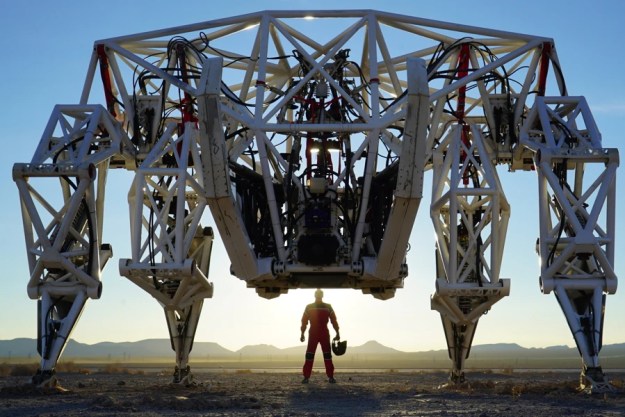Some people just have a need for more magnification than can be found in the typical array of consumer-level digital cameras. For avid birdwatchers, hunters, private detectives, and others who need to capture images from afar, getting in closer make all the difference, and a measly 5x zoom doesn’t always cut it.
For their purposes, nothing beats the bulky telephoto lenses that can be mated to DSLR cameras. But the cost of both components puts them out of reach for most hobbyists. In their place, a community of so-called “digiscopers” have started extending the zoom of affordable cameras with affordable sighting scopes, giving birth to the do-it-yourself digiscope: half digital camera, half telescope.
Image Courtesy of Minox
Minox recently commercialized this concept with the introduction of the new Digital Eyepiece Camera (DEC) 5.0. It’s a camera especially meant to be combined with the company’s spotting scopes for snapping shots from very, very far away, without shelling out for a professional DSLR package or cobbling together your own digiscope from adapters.
The appeal of a commercial digiscope is evident from the DEC’s simple design. Unlike DIY units, which can start to look like homemade ray guns with all the pieces needed to fit them together, the DEC 5.0 simply replaces the eyepiece on a normal sight using a standard bayonet fitting. In terms of size, it’s hardly even bulkier than the optical equivalent, since it basically amounts to a cube that measures a little more than 2 inches in every dimension, weighing a little less than half a pound.
The back face of the cube offers a 2.5-inch TFT LCD screen in place of a viewfinder, allowing users to adjust it without squinting, and for multiple people to look on at the view. Since the scope will clearly be used outdoors, Minox includes a rotating hood that pivots to shade the screen and protect the camera from exposure to elements. The company also claims the camera is watertight and shockproof – another edge over the homemade equivalent.
As far as cameras go, the DEC 5.0’s internals are fairly pedestrian. Although its name implies a full 5.0-megapixel sensor, the DEC 5.0 actually only takes photos at this resolution through interpolation. The CMOS sensor at its core captures 3.2-megapixel images. While not particularly impressive in an age when even $200 cameras can hit 8.0 megapixels, the camera’s exceptional zoom will probably make cropping and blowing up images a non-issue. The DEC also packs 128MB of internal storage, and has room for 4GB more through an SD expansion slot.
The zoom the DEC 5.0 provides obviously varies by the scope it ends up on, but Minox uses its MD 62 series scope for reference, which delivers 40x zoom. Since bayonet fittings are common on sighting scopes, other brands will also fit fine on the DEC 5.0, including scopes from Zeiss, Leica, Swarovski and Kowa. The pricy Leica Televid 77, for instance, would provide the camera with an impressive 60x zoom.
Minox will debut the Digital Eyepiece Camera 5.0 in May 2008 for around $449. Since the spotting scopes needed to use the DEC can run for hundreds of dollars, a full rig will still be no small investment for hobbyists, but it will undoubtedly hit the wallet less than a bazooka-sized DSLR setup. More information on the DEC 5.0 can be found at Minox’s web site.
Editors' Recommendations
- Digital Trends’ Tech For Change CES 2023 Awards
- How 5G is changing journalism
- Sony’s first drone, the Airpeak S1, rockets to 55 mph in just 3.5 seconds
- 5G is enhancing the fan experience at the Big East Men’s Basketball Tournament
- Meet the man on a controversial mission to preserve and digitize your brain



